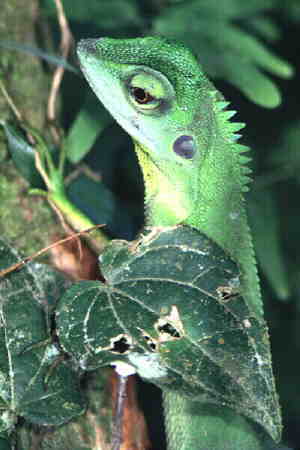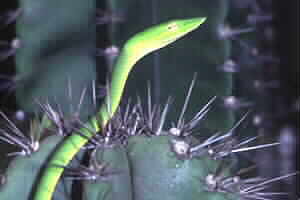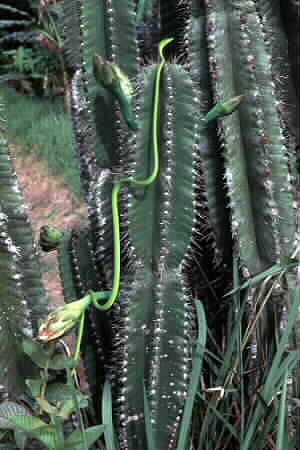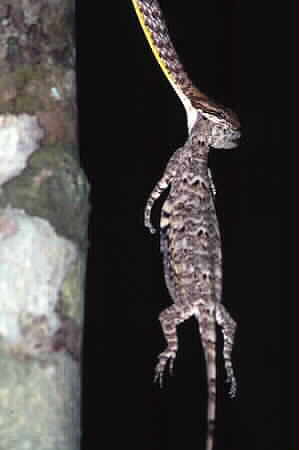|
CHIN'S NATURE CORNER ~ PHOTO GALLERY ~ LIZARDS AND SNAKES
|
Lizards and Snakes
 FROM my few encounters with lizards, I have learnt that they are more afraid of humans
than we of them. Despite their fearsome look, they will
flee at the approach of humans. But like most people, I'm really scared of snakes.
The sight of one slithering by sends shivers down my spine. Snakes are mostly
nocturnal in habit, and, fortunately, I don't often see them on my day-time jaunts into
the jungle. So there are only a few snakes that I have captured on film. I have included two
species in this section.
FROM my few encounters with lizards, I have learnt that they are more afraid of humans
than we of them. Despite their fearsome look, they will
flee at the approach of humans. But like most people, I'm really scared of snakes.
The sight of one slithering by sends shivers down my spine. Snakes are mostly
nocturnal in habit, and, fortunately, I don't often see them on my day-time jaunts into
the jungle. So there are only a few snakes that I have captured on film. I have included two
species in this section.
|
|
Green Crested Lizard
(Calotes cristatellus)
This lizard is commonly found in secondary growth, at the forest fringe and
also in agricultural areas, especially
if they are situated near a forest. When frightened, it can change
its colour to brown or dark grey. However, it is not a chameleon. Chameleons are not
found east of India.
|

|

|

The Oriental Whip Snake
(Ahaetulla prasina)
This is a common snake that is native to Peninsular Malaysia and Singapore. I found
this specimen, which was about one metre (yard) long, "strung over" a cactus beside
a rural path, perhaps warming itself in the late afternoon sunshine. The species can
grow up to two metres, and feeds mainly on small birds and lizards.
(The cactus is a non-native species.)
|

|
|
Snake Captures Flying Lizard
I caught sight of this snake trying to eat a lizard because its victim was
struggling and repeatedly jerking its body. The victim is a flying lizard
(Draco species) which is quite common in that forest. In this picture,
the flaps of skin, or patagia, which aid the species
in gliding, can be seen partly extended from the lizard's body. I took
several pictures and left the snake to continue with its meal. Several days
later, I passed by the spot and found the carcass of a lizard, possibly the same
specimen. So perhaps the snake (possibly a Painted Bronzeback, Dendrelaphis pictus)
did not manage to swallow what it had caught.
|

|
This page revised on 24 May 2005. Copyright © Chin Fah Shin.
|
You can support this
site by shopping at AllPosters.com |

|
Please click on a link below to shop online
|

